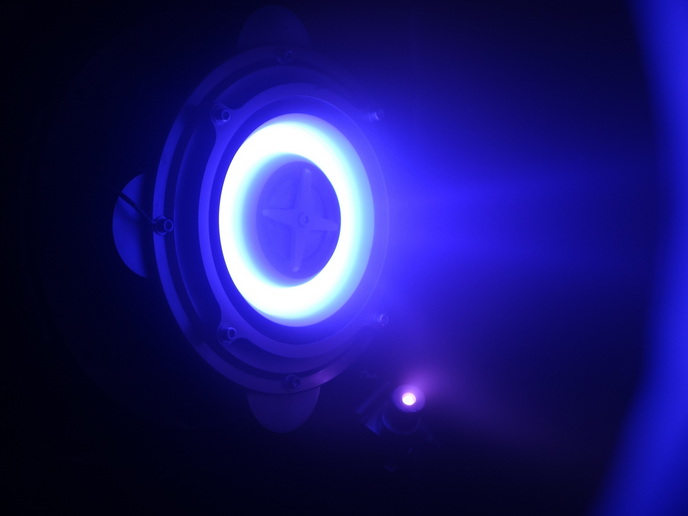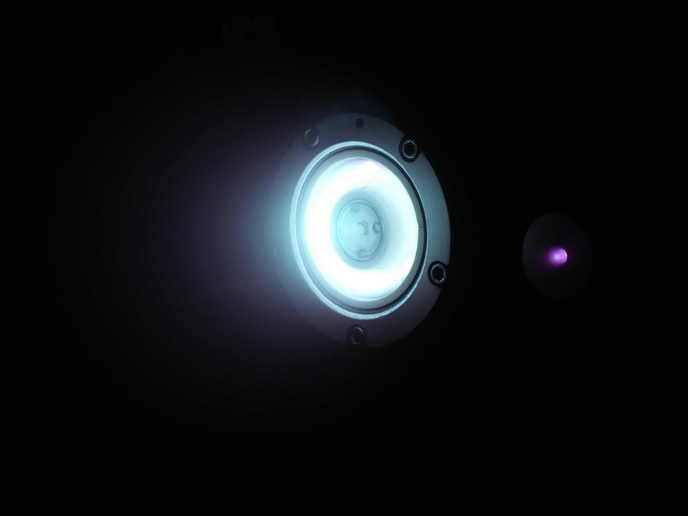High-power thrusters fuelling future spaceflight
Traditional chemical propulsion methods – which rely on burning fuel to generate thrust – are being gradually overshadowed by electric propulsion systems (EPSs), particularly those based on Hall-effect thrusters. Leveraging an electromagnetic field to ionise and accelerate a gas, EPSs offer a substantial improvement in specific impulse over their chemical counterparts, providing spacecraft with a considerable mass advantage.
The path to high-power electric propulsion systems
After extensive research and development, electric propulsion has become a reality, with low-power systems already being used in space missions. However, the demand for high-power thrusters is growing, driven by the needs of future space exploration and transport missions, and the deployment of versatile service platforms like the space tug for in-orbit servicing and debris removal. High-power EPS, particularly those in the 20-kW class, are pivotal to these platforms, offering the ideal balance of operational flexibility and thrust-to-power ratio. However, the path to qualifying such advanced systems for use in space has been hindered by prohibitive costs and extensive testing times. A significant advancement in the technology maturity and an alternative qualification strategy proposed by the EU-funded ASPIRE project sought to overcome these challenges. By performing a coupling test at system level and then by integrating advanced numerical modelling with targeted test campaigns, ASPIRE’s strategy sought to deliver a cost-effective and methodical pathway for developing and qualifying high-power Hall-effect thruster systems.
Unprecedented achievements in thruster testing
The team started with various application scenarios that could benefit from such powerful EPSs, establishing high-level requirements. Leveraging the experience gained from working on lower-power EPSs, the researchers advanced the design of various sub-systems and components, including the thruster unit, the fluidic management system and the power architecture. Each of these subsystems underwent separate testing phases before undertaking the most challenging task of integrating and testing the complete EPS at system level. The final test of the integrated EPS was executed at the SITAEL’s IV10 facility, one of the largest vacuum chambers for electric propulsion testing worldwide. “During our groundbreaking tests, the thruster was ignited multiple times, successfully operating within the desired power range of 12.5-25 kW using both xenon and krypton as propellants,” highlights Angarano. This phase allowed us to explore various aspects of EPS operation in direct-drive mode and high-voltage conditions. The direct-drive architecture allows us to significantly reduce the mass and increase the efficiency of the power electronics. “A groundbreaking aspect of ASPIRE is its consideration of krypton as a propellant. Traditionally, xenon has been used, but krypton offers a cost-effective alternative, reducing the qualification costs by at least an order of magnitude,” adds Angarano. “Moreover, even if not originally foreseen, we also decided to test the thruster with argon. Argon is recently being considered an even more economical alternative to krypton for electrical propulsion. This was the first successful test worldwide in operating a 20-kW thruster with argon.” Researchers studied pertinent plasma phenomena and developed simulation codes to evaluate the performance of the thruster over time and across different operating conditions.
Pioneering the future of space exploration
No other EPS above 12.5 kW has yet reached the qualification stage, positioning ASPIRE’s system among the forefront of advancements poised for qualification and an in-orbit demonstration. This leap is partly due to ASPIRE’s innovative strategy, which leverages predictive numerical tools – a first on a global scale – to streamline the qualification process. “It was a challenging project, but ultimately the results rewarded our efforts. I am looking forward to soon seeing an electric thruster propel a spacecraft to Mars and beyond,” concludes Angarano.
Keywords
ASPIRE, qualification, krypton, argon, Hall-effect thruster, propellant, high-power thruster, high-power electric propulsion







